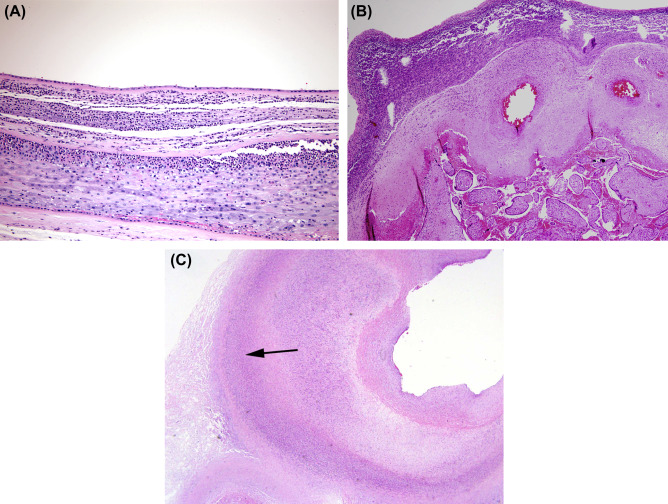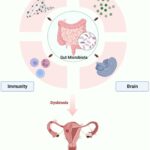Bacteroides endomyometritis is a severe uterine infection primarily caused by anaerobic bacteria from the genus Bacteroides. This condition typically affects the inner lining (endometrium) and the muscular layer (myometrium) of the uterus. It is most commonly observed in postpartum or post-surgical settings, particularly after cesarean deliveries or other gynecological interventions.

Pathophysiology and Role of Bacteroides
The genus Bacteroides comprises gram-negative, obligate anaerobic bacteria that are a normal component of the gastrointestinal and female reproductive tract microbiota. Under certain conditions, such as disruption of the natural barriers during childbirth or surgery, these bacteria can translocate and cause significant infections. The pathogenicity of Bacteroides is associated with:
- Capsular Polysaccharides: Enhance resistance to phagocytosis.
- Enzymatic Activity: Production of proteases, lipases, and other virulence factors that degrade host tissues.
- Biofilm Formation: Facilitates adherence to surfaces and evasion of host immune responses.
Risk Factors for Bacteroides Endomyometritis
Several factors predispose individuals to developing Bacteroides-associated endomyometritis:
- Cesarean Delivery: The risk increases significantly when prophylactic antibiotics are not administered.
- Prolonged Labor: Extended duration of labor can introduce bacteria into the uterine cavity.
- Rupture of Membranes: Premature or prolonged rupture allows bacteria to ascend.
- Intrauterine Procedures: Instrumentation, such as dilation and curettage (D&C), can introduce pathogens.
- Immunosuppression: Conditions like diabetes or use of immunosuppressive medications reduce the body’s ability to combat infections.
Clinical Presentation
Bacteroides endomyometritis typically manifests within a few days postpartum or post-surgery. Common symptoms include:
- High-grade fever (>38°C or 100.4°F)
- Lower abdominal pain and tenderness
- Foul-smelling lochia (postpartum vaginal discharge)
- Leukocytosis (elevated white blood cell count)
- Pelvic tenderness on physical examination
Complications, such as pelvic abscesses or septicemia, may arise if the infection is left untreated.
Diagnostic Approach
Early diagnosis is crucial to prevent complications. The diagnostic process involves:
- Clinical Assessment: Identification of symptoms and risk factors.
- Laboratory Tests:
- Complete Blood Count (CBC) to evaluate leukocytosis.
- Blood cultures to identify bacteremia.
- Endometrial cultures for definitive pathogen identification.
- Imaging Studies:
- Ultrasound to assess uterine abnormalities or abscess formation.
- CT or MRI in complicated cases to detect pelvic extension of infection.
Treatment Strategies
The management of Bacteroides endomyometritis involves a combination of antibiotic therapy and supportive care. Key aspects include:
1. Antibiotic Therapy
Empirical antibiotic treatment is initiated immediately, targeting anaerobic bacteria. Common regimens include:
- Clindamycin plus Gentamicin: Effective against both anaerobes and gram-negative aerobes.
- Ampicillin-Sulbactam: Broad-spectrum coverage.
- Metronidazole: Specific activity against anaerobic organisms, often combined with other agents.
Duration of therapy depends on clinical response but generally ranges from 7 to 10 days.
2. Supportive Care
- Intravenous fluids to maintain hemodynamic stability.
- Pain management with NSAIDs or acetaminophen.
- Monitoring for signs of complications, such as abscess formation or septic shock.
3. Surgical Intervention
In cases of abscess formation or treatment failure, surgical procedures such as drainage or hysterectomy may be required.
Prevention of Bacteroides Endomyometritis
Preventive measures are critical to reducing the incidence of this condition:
- Prophylactic Antibiotics: Administered preoperatively in cesarean deliveries.
- Aseptic Techniques: Ensuring sterile conditions during surgical and obstetric procedures.
- Minimizing Invasive Procedures: Avoiding unnecessary instrumentation of the uterine cavity.
Prognosis
With prompt treatment, most patients recover fully from Bacteroides endomyometritis. However, delayed intervention can lead to serious complications, including chronic pelvic pain, infertility, or life-threatening sepsis.

